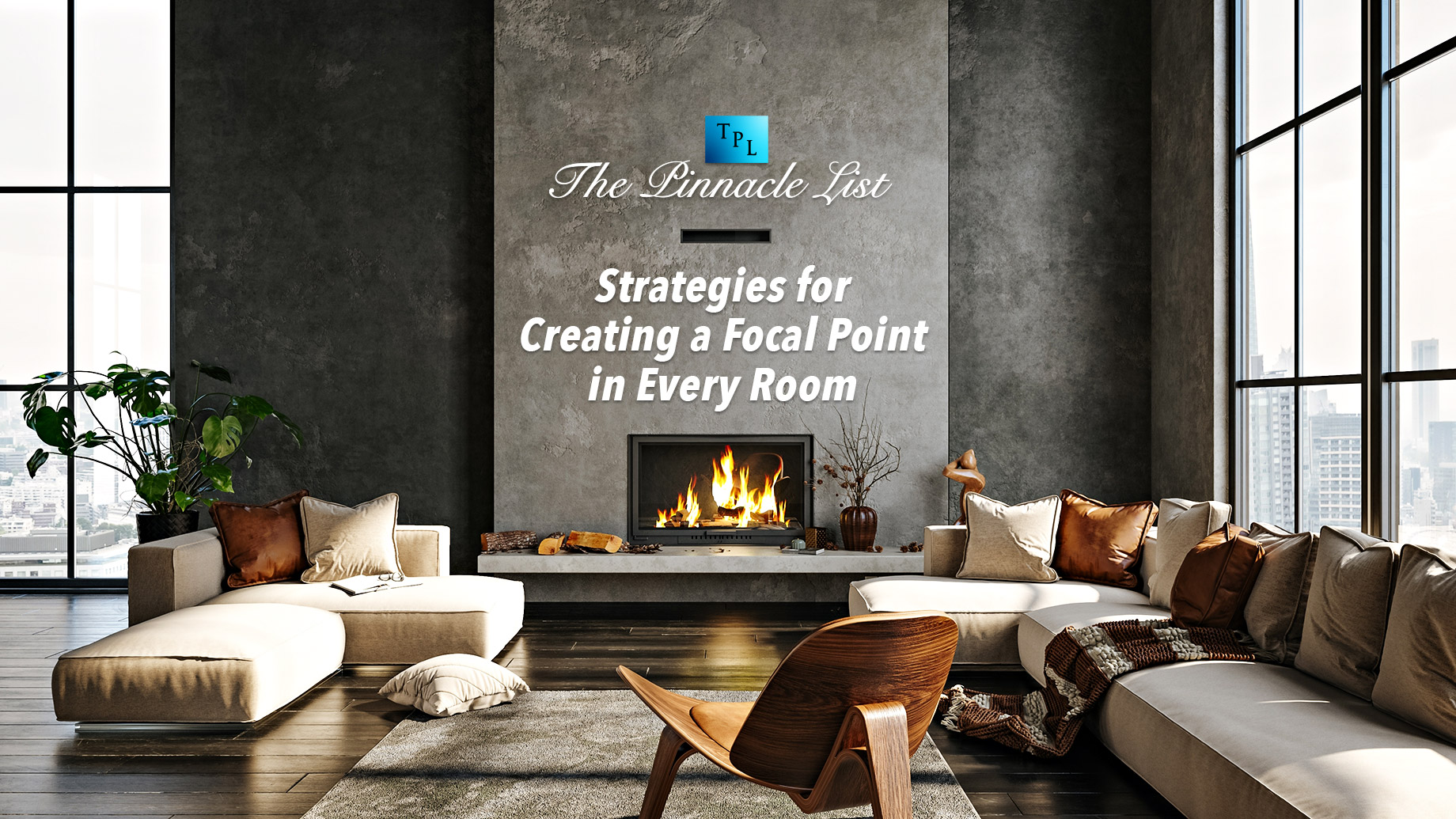
Creating a focal point in a room is an essential design strategy that draws attention and anchors the space. A well-chosen focal point can provide a sense of direction, balance, and cohesion, making the room feel intentional and harmonious. Whether it’s a living room, bedroom, or kitchen, every space can benefit from a focal point that captures interest and enhances the overall design. Here are several strategies for creating a focal point in every room of your home.
1. Highlight Architectural Features
If your room has built-in architectural features, these can naturally serve as focal points. Fireplaces, large windows, exposed brick walls, or built-in shelving are ideal elements to highlight and draw attention to. To make the most of these features, accentuate them with complementary decor.
For example, if you have a fireplace, you can turn it into a focal point by hanging a large mirror, artwork, or statement mantel decor above it. Adding plants, candles, or vases to the mantel will further emphasize the area. If a large window provides a stunning view, let it shine by keeping window treatments minimal and arranging furniture to frame the view, ensuring it takes center stage.
2. Use Statement Furniture
Furniture can easily become the focal point of a room, particularly in spaces like the living room or bedroom. In a living room, a bold sofa in a vibrant color or an elegant armchair with unique upholstery can command attention. Pairing these pieces with more neutral or subdued surrounding decor allows them to stand out.
In a bedroom, the bed is the natural focal point. Dress it up with an eye-catching headboard, luxurious bedding, or a bold throw blanket. Layering the bed with pillows in various textures and patterns can also add to its visual appeal.
3. Create Art Displays
A well-placed piece of art can be a stunning focal point in any room. Large artwork on a key wall, such as above a sofa or bed, immediately draws the eye and sets the tone for the rest of the decor. If you prefer smaller pieces, consider creating a gallery wall with a curated collection of art, photographs, or prints. The cohesive arrangement of the gallery can become a focal point that tells a story or showcases your personality.
For rooms where wall space is limited, consider placing artwork on easels or on top of consoles and shelves, allowing it to stand out without the need for hanging.
4. Incorporate Bold Colors or Patterns
Introducing a bold color or pattern into a room can naturally draw attention and create a focal point. This could be achieved through an accent wall, where a vibrant paint color or patterned wallpaper creates contrast and interest. Positioning key furniture or decor against the accent wall reinforces its role as the focal point.
You can also add bold colors through smaller decor items like pillows, geometric area rugs, or striking curtains. In a more neutral room, a few vibrant accents can shift the focus without overwhelming the space.
5. Utilize Lighting as a Feature
Lighting not only serves a functional purpose but can also become a focal point, especially when used creatively. Statement lighting fixtures like chandeliers, pendant lights, or sculptural lamps add drama and elegance to any room. Placing a striking chandelier over a dining table, for example, draws the eye upward and defines the space.
For a subtler approach, layered lighting—such as wall sconces, floor lamps, and table lamps—can highlight specific areas of the room, helping guide the eye to various focal points like artwork or furniture.
6. Incorporate Textures and Materials
Textures and materials can also serve as focal points, especially when they contrast with the rest of the room. In a living room, a textured wall featuring wood paneling, stone, or brick immediately grabs attention. In the bedroom, a plush upholstered headboard or a luxurious velvet armchair can become the focal point due to their tactile appeal.
Using unique materials like marble countertops in the kitchen or a metallic accent wall in a hallway creates a sense of luxury and refinement, turning these elements into striking focal points.
7. Use Mirrors Strategically
Mirrors are an excellent way to create focal points, particularly in smaller rooms where you want to create the illusion of space. A large statement mirror in the hallway, living room, or bedroom not only adds light and dimension but also serves as an elegant focal point. For a unique look, you can use a series of smaller mirrors arranged in an artistic pattern to achieve a similar effect.
Final Thoughts
Creating a focal point in every room is about emphasizing the most eye-catching feature, whether it’s an architectural element, a piece of furniture, art, or lighting. By thoughtfully selecting and highlighting focal points, you can give each room a clear sense of purpose and aesthetic balance, making your home more visually engaging and comfortable to live in.